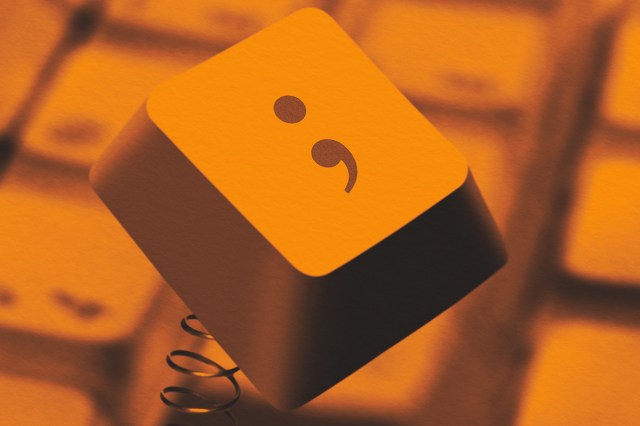
The semicolon appears to be a visual blend of a colon and a comma, and it can perform similar jobs to each of those punctuation marks. Its primary use is to link ideas that are closely related in thought, but that’s a task that can also be done by a comma or an em dash. In part because of this, the semicolon is one of the most misunderstood (and misused) English punctuation marks; let’s learn more about the specific functions of this unique grammatical tool.
The most common way to use a semicolon is by joining two independent clauses. That means it links together two stand-alone clauses into one sentence.
Keep in mind that the two independent clauses should be closely related. Otherwise, it makes more sense to break them into separate sentences. It’s also important to note that a comma can’t replace a semicolon in this usage — that creates a comma splice.
Another note: If there is an independent clause and a dependent clause, it’s not a place for a semicolon. Dependent clauses feature a subject and a verb but aren’t complete sentences. If there’s a dependent clause, a comma and a coordinating conjunction are likely needed instead of a semicolon.
Independent clauses can be joined by a semicolon or by a comma and a coordinating conjunction. (Use the mnemonic FANBOYS to remember the seven coordinating conjunctions: “for,” “and,” “nor,” “but,” “or,” “yet,” and “so.”)
See how the the semicolon replaces the comma and the coordinating conjunction:
When the semicolon links the independent clauses, it shows a relationship or contrast. It can also create variety. For example, the semicolon allows a writer to add a longer sentence among other short, clipped sentences.
Semicolons are also used to link clauses when the second begins with a conjunctive adverb or transitional expression. These include “accordingly,” “furthermore,” “however,” “instead,” “otherwise,” and “therefore.”
As long as it’s joining two independent clauses, using the semicolon is appropriate.
In speech, pauses or visual cues can break up long lists of items, but writers rely on punctuation to do the heavy lifting. Semicolons can make a long or complicated list of items easier to read. Typically, these are lists that contain phrases or other internal punctuation that might be difficult to read without semicolons.
The semicolon should be used only if the list contains three or more elements, and they’re elaborate enough that the extra punctuation would help readers understand the meaning.















